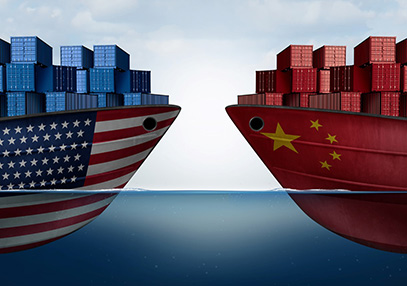
Text and Images referenced from the full article on the Finance Monthly website. Read it here:
https://www.finance-monthly.com/2018/04/what-are-trade-tariffs-and-do-they-actually-work/
Talk of “Tariffs” has been widespread throughout news outlets and social media channels, but for most, the meaning and impact of Tariffs is deeply misunderstood. While it would take much more than a few paragraphs to fully dissect the subject, we can briefly review the concept and hopefully gain a better understanding of how Tariffs impact our industries and our economy overall.
In the simplest explanation, Trade tariffs were intended to increase and ease competition, while helping to decrease the costs of shipping goods abroad. To borrow a phrase that has been thrown about a lot recently, it can often be described as “leveling the playing field”. This has the potential to be a source of growth for international businesses and promote globalization, yet there are always concerns that some in the trade cycle will end up on the wrong side of the equation. (Research the CPTPP for a recent example here.)
The Role of Trade Tariffs
According to a definition from the World Trade Organisation (WTO), trade tariffs are “customs duties or taxes on merchandise imports”. Their purpose, among other things, is to provide an advantage to domestic or locally produced goods over those which are imported. Also, there is some expectation that the goods sourced from abroad will help raise greater revenues for their own governments as pricing aligns competitively with the global markets. Countries will always have the ability to set their own trade tariffs and change them when desired, though this often results in political tensions and are quite often used as a bargaining point for trade negotiations and agreements between nations or groups of nations. North American Free Trade Agreement (NAFTA) and Trans-Pacific Partnership (TPP) are some recent examples where tariffs weighed heavily on the agreements.
Here are some basic examples of how Tariffs may be used:
- Job Protection: Low-cost imported goods can threaten domestic jobs and industries, especially if they’re produced cheaply abroad. Domestic firms may be forced to cut jobs to save on costs,and in a lot of cases, move production overseas. Trade tariffs can be used to create a more level playing field.
- Consumer Health and Safety: Most applicable to importing foodstuffs, if an importing country is concerned about contamination, health risks, or fraudulent reporting of ingredients, they can levy a tariff with the hopes of forcing compliance with food safety inspection measures and reduce the risk for consumers
- Political leverage: When countries believe that trading partners are not abiding by the rules or agreements, or there are other political motivations, they can increase tariffs. This usually results with the opposing nation retaliating with tariffs of their own and subsequently the “Trade War” we hear so much about. Since this is undesirable to either nation, it usually forces all parties to the bargaining table to work out agreements that can satisfy all involved.
History is rife with examples of where trade tariffs have been leveraged in such ways, and they are still frequently utilized as political ammunition in current events. This does suggest that they are effective, but like anything, must be tempered with moderation.
